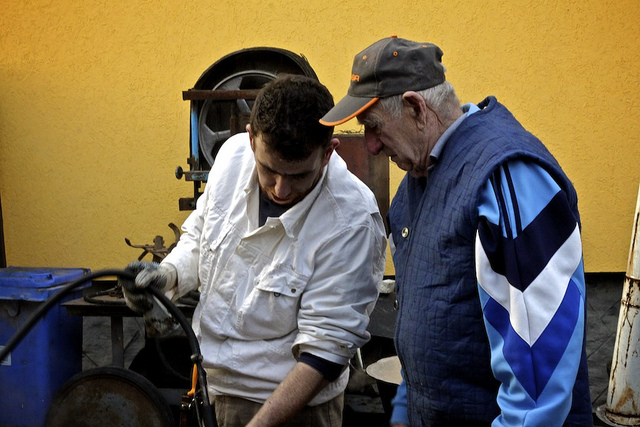Category: Keeping up with the Magyars
-
Classroom 2.0: The Wiki Experiment
Wherein Greg endeavors to teach high schoolers to wiki responsibly.
-
Munkácsy Times
A quick update for everyone out there. We at Munkácsy Mihály Gimnázium started an English language newspaper at our school last December. We published one issue in print and now it will continue, mostly, online. Check it out at http://munkacsytimes.wordpress.com. All the articles from our first issue are already available there, and new articles will…
-

A Legfinomabb Magyar Étel
On a Friday in late autumn, I walked into my ninth grade bilingual classroom to find an interesting query scrawled across the blackboard. “What is disznóvágás in English?” My command of basic Hungarian pronunciation was still rough around the edges, and as I read the sentence aloud, I mangled the word. I waited for the…
-
State Fair Food Pitched by Munkácsy Students
This past weekend, Kaposvár celebrated the Hungarian tradition of Farsang (far-shaang). The festival featured creatures known as Busó (pronounced boo-show) roaming around Kossuth square, mostly scaring children and dogs, but some also got a bit aggressive with the ladies, which was a little strange. The story of the Buso goes something like this:
-
Swept Away in Vienna
As an English teacher living in South Korea last year, I developed a tired habit. Week after repetitive week, I mentally promised myself that I would really, truly contact local Wisconsin newspapers in search of one that might grant me the space for a column. I managed to deftly avoid 52 self-imposed deadlines, but I…